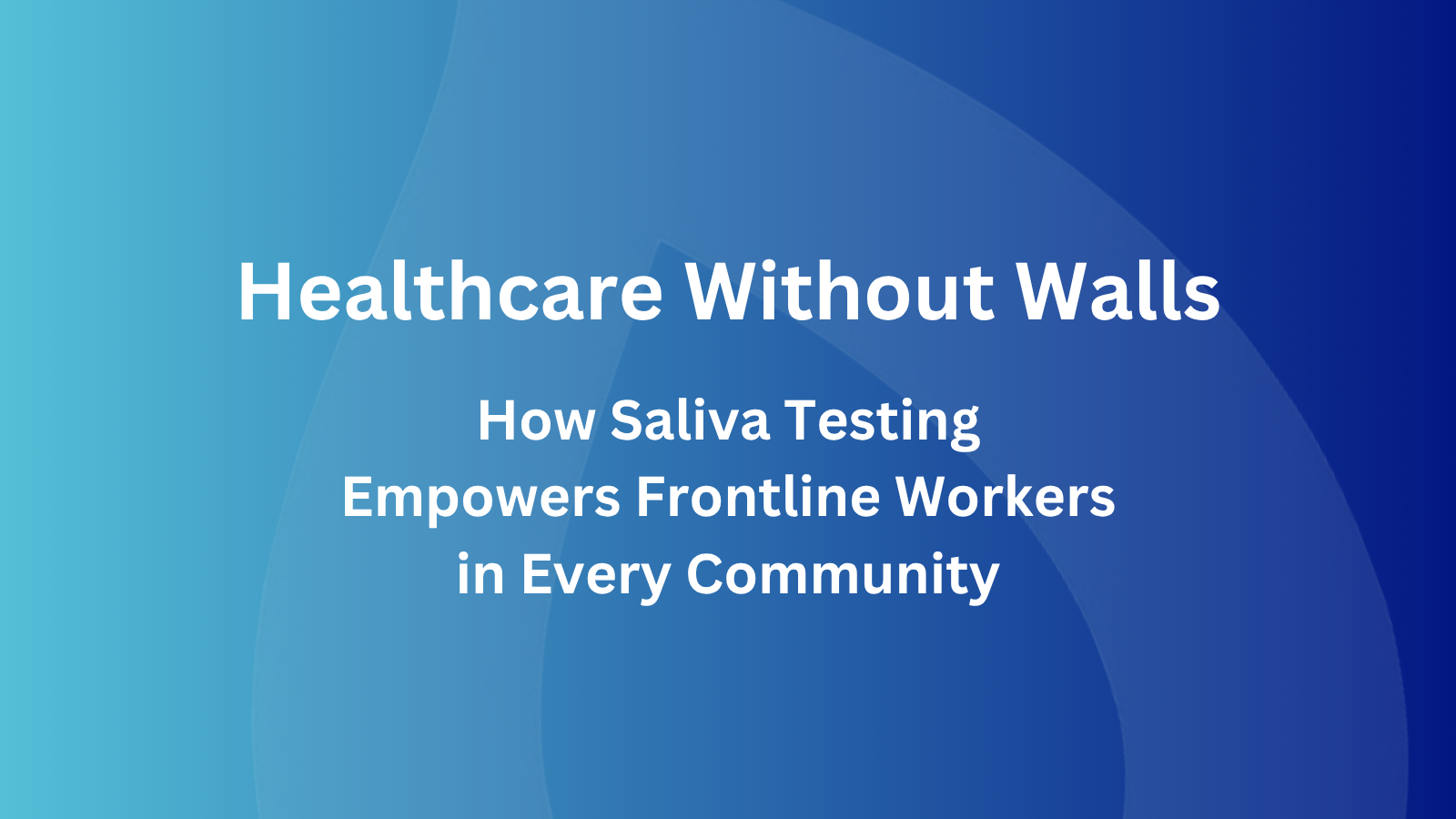Beyond the Clinic: How Saliva Testing Empowers Community Health Workers
Community health workers (CHWs) are the unsung heroes of global healthcare. They bridge the gap between formal medical systems and underserved populations, often traveling long distances and working in challenging environments to deliver essential services. As healthcare evolves, so too must the tools at their disposal. Saliva-based diagnostics are rapidly emerging as a transformative asset for CHWs, enabling them to deliver faster, safer, and more accessible care—right where it’s needed most.
The Expanding Role of Community Health Workers
In many low- and middle-income countries, CHWs are the backbone of primary healthcare. They provide maternal and child health services, screen for infectious diseases, monitor chronic conditions, and educate communities about nutrition and hygiene. Their ability to reach remote or marginalized populations makes them indispensable in the fight against health inequities.
However, CHWs often face significant barriers. Traditional diagnostics, such as blood tests, require specialized training, sterile environments, and equipment that may be unavailable outside clinics or hospitals. These limitations can delay diagnosis and treatment, especially in rural or resource-limited settings.
Saliva Testing: A Practical Solution for the Field
Saliva-based diagnostics offer a practical alternative that aligns perfectly with the realities of community-based healthcare. Collection is non-invasive, painless, and does not require needles or complex equipment. This simplicity allows CHWs to perform tests during home visits, school screenings, or community health campaigns without the logistical hurdles of traditional methods.
Saliva tests can be self-administered or collected with minimal instruction, freeing CHWs to focus on education, counseling, and follow-up care. The reduced need for biohazard disposal and cold storage further streamlines operations, making it easier to scale up screening programs in challenging environments.
Increasing Reach and Participation
One of the most powerful impacts of saliva testing is its ability to increase participation in health programs. Many people, especially children and those with needle phobia, are reluctant to undergo blood draws. Cultural or religious beliefs may also discourage invasive procedures. Saliva collection, by contrast, is widely accepted and can be performed discreetly and comfortably.
This inclusivity leads to higher screening rates and more accurate data, enabling CHWs to identify health risks and intervene earlier. For example, saliva-based tests for infectious diseases like HIV, hepatitis, and COVID-19 have been shown to improve uptake in communities where blood testing faces resistance. In maternal and child health, saliva diagnostics are being used to monitor nutritional status, detect gestational diabetes, and track hormone levels—empowering CHWs to provide targeted support to vulnerable groups.
Real-World Impact: Stories from the Field
In rural Africa and Asia, saliva testing has already made a tangible difference. CHWs equipped with portable saliva collection kits have been able to screen hundreds of children for micronutrient deficiencies in a single day, identifying those at risk of stunting or anemia and connecting them with nutritional support. During the COVID-19 pandemic, saliva-based PCR tests enabled rapid, community-wide screening, helping to contain outbreaks before they could spread.
Empowering the Next Generation of Health Workers
As technology advances, the potential for saliva-based diagnostics will only grow. Multiplex assays capable of detecting multiple conditions from a single sample are on the horizon, further increasing the efficiency and impact of CHWs. Digital platforms are being developed to connect test results with centralized databases, enabling real-time disease surveillance and more responsive public health strategies.
By equipping CHWs with these innovative tools, we are not only enhancing their ability to serve their communities but also empowering them to become agents of change within the broader healthcare system. Saliva testing exemplifies the shift toward decentralized, patient-centered care—where health truly begins at home and in the community.
A New Era for Community Health
Saliva-based diagnostics are more than just a technological advancement; they represent a paradigm shift in how healthcare is delivered to those who need it most. By making testing safer, simpler, and more accessible, saliva diagnostics empower community health workers to fulfill their vital mission with greater confidence and effectiveness.


